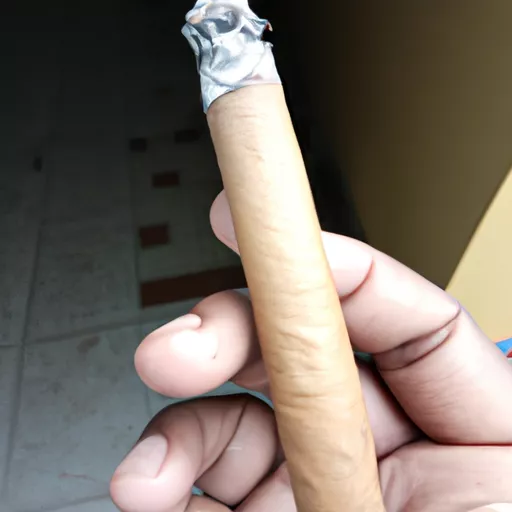
As a lover of cigars, I have always been intrigued by the unique and compact world of little cigars. While they may be smaller in size, they are definitely not lacking in flavor and character. In this article, I will delve into the history, production, and enjoyment of little cigars.
Firstly, let’s clarify what exactly a little cigar is. Little cigars are small, slim cigars that are typically hand-rolled with a blend of tobacco. They differ from regular-sized cigars in their size and packaging. Little cigars are usually packed in packs of 20, similar to cigarettes, while traditional cigars are sold in individual wooden boxes. They also tend to have a milder taste compared to traditional cigars, making them a popular choice for those who are new to the world of cigars.
The history of little cigars can be traced back to the 19th century when they were first introduced in Europe. Back then, they were known as “cigarillo,” meaning small cigar in Spanish. These cigars were a cheaper alternative to traditional cigars and were often favored by working-class individuals. However, they gained popularity among the elite as well, eventually making their way to the United States.
In the early 1900s, little cigars were mainly produced in Cuba and were known as “puritos.” With the rise of the cigar industry in the Dominican Republic and Honduras, the production of little cigars spread to these countries as well. Today, little cigars are made all around the world, with the Dominican Republic, Honduras, and the United States being the leading producers.
So, how are little cigars made? The production process is quite similar to that of traditional cigars. It starts with the selection of high-quality tobacco leaves. These leaves are then sorted, dried, and aged to enhance their flavor. Next, the leaves are cut into smaller pieces and blended together to create a unique and consistent taste. The blend is then wrapped in a tobacco leaf, rolled, and cut to the desired size. Finally, the cigars are packaged and ready to be enjoyed.
One of the main differences between little cigars and traditional cigars is the type of tobacco used. While traditional cigars are made with long filler tobacco leaves, little cigars are made with short filler tobacco. This means that the tobacco in little cigars is not as tightly packed, resulting in a milder and smoother smoke. However, this does not mean that little cigars lack complexity in flavor. In fact, the blend of different tobacco leaves in little cigars creates a unique and enjoyable taste.
When it comes to smoking a little cigar, there are a few things to keep in mind. Firstly, because of their smaller size, little cigars burn faster than traditional cigars. This means that they should be smoked at a slower pace to fully appreciate their flavor. Also, unlike cigarettes, little cigars do not have filters, so it is important to not inhale the smoke. Instead, let the smoke rest in your mouth and savor the flavors before exhaling. Another tip is to pair your little cigar with a beverage of your choice. Whether it’s a glass of whisky or a cup of coffee, the right beverage can enhance the overall experience of smoking a little cigar.
One of the reasons why little cigars have gained popularity among cigar enthusiasts is their affordability. Compared to traditional cigars, little cigars are relatively cheaper, making them a great option for everyday smoking. They also come in a wide variety of flavors, from sweet to bold, giving smokers a range of options to choose from. This also makes them a great option for those who prefer flavored cigars but don’t want to commit to the large size of traditional-flavored cigars.
In recent years, little cigars have faced some backlash due to their similarity to cigarettes. Some health experts argue that little cigars can be just as harmful as cigarettes since they do not have a filter. However, it is important to note that little cigars are made with 100% tobacco, unlike cigarettes which contain a variety of added chemicals. Additionally, little cigars are often enjoyed in moderation, making them a less harmful option compared to cigarettes.
In conclusion, little cigars may be small in size, but they pack a punch when it comes to flavor and enjoyment. Their rich history and production process make them a unique and valuable addition to the cigar industry. From their variety of flavors to their affordability, little cigars have something to offer to both experienced and novice cigar smokers. So next time you’re looking for a quick and flavorful smoke, give little cigars a try, and you might just find your new favorite cigar.
